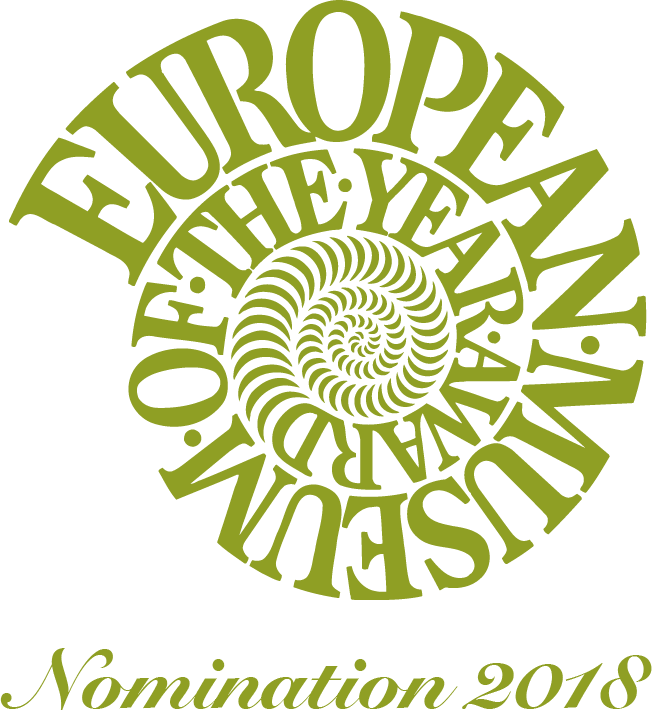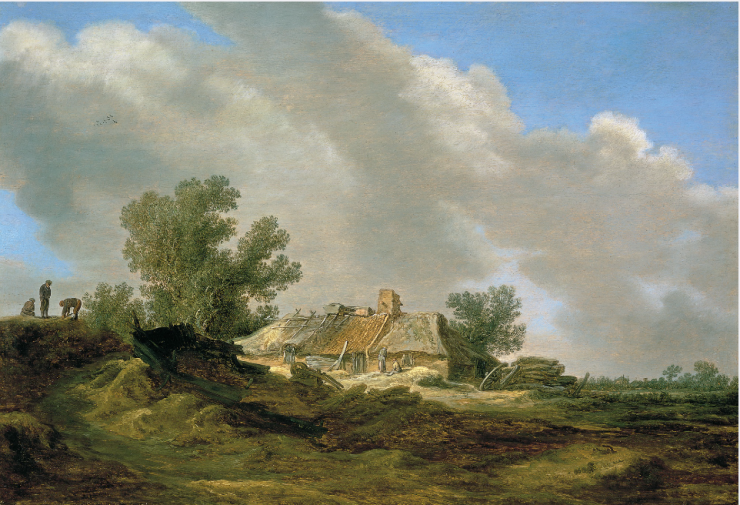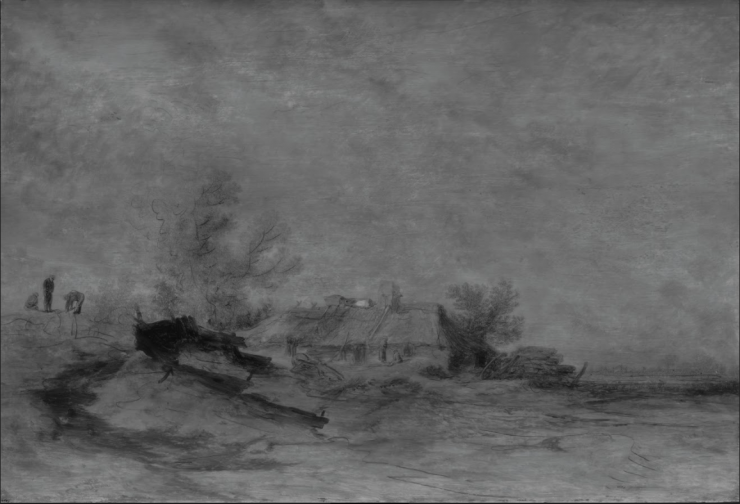Today, the Museu Carmen Thyssen Andorra invites you to discover a new secret hidden in the exhibition “INFLUENCERS in art. From Van Goyen to Pop Art“, through the work “Dune Landscape with Hut and Figures“, 1629, by the artist of the Dutch Golden Century, pioneer of the “tonal” landscape Jan Josefsz Van Goyen.
Working on the colours of his creations, the artist limited his palette to browns, ochres and greens, succeeding in representing more than a simple landscape, light and atmosphere representative of the Dutch climate. But what exactly is the creative process? What are the origins of “Dune Landscape with Hut and Figures“? The answer can be found using the technique of infrared reflectography.
What is infrared reflectography and what is it used for?
Infrared reflectography is a technique applied by restorers in order to uncover the internal state of the work, in particular thanks to the radiation emitted by the infrared camera, which is able to penetrate the pictorial layer, revealing the underlying layers of paint.
This operation offers us the development of the artist’s thinking through the preparatory drawing, the backbone of any work, now visible. It is therefore possible to see the artist’s graphic research as well as his modifications, abandonments or repentances, in other words the first steps of the final work.
Just like the creation of the drawing, the infrared also describes the process of creating the work by revealing clues about the techniques used, the materials and even the tools. Like an open window on what is not supposed to be visible, reflectography finally provides answers to questions relating to expertise or attributions.
The application of infrared reflectography made it possible to discover, exclusively for the exhibition “INFLUENCERS in Art. From Van Goyen to Pop Art“, the initial structure, the preparatory drawing of the work “Dune Landscape with Hut and Figures“, carried out with coal, nearly four centuries ago.




